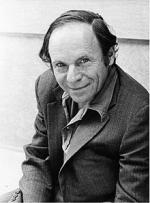Disable ads!
Philip Morrison
Philip Morrison (November 7, 1915 – April 22, 2005) was a professor of physics at the Massachusetts Institute of Technology (MIT). He is known for his work on the Manhattan Project during World War II, and for his later work in quantum physics, nuclear physics and high energy astrophysics. A graduate of Carnegie Tech, Morrison became interested in physics, which he studied at the University of California, Berkeley, under the supervision of J. Robert Oppenheimer. He also joined the Communist Party. During World War II he joined the Manhattan Project's Metallurgical Laboratory at the University of Chicago, where he worked with Eugene Wigner on the design of nuclear reactors. In 1944 he moved to the Manhattan Project's Los Alamos Laboratory in New Mexico, where he worked with George Kistiakowsky on the development of explosive lenses required to detonate the implosion-type nuclear weapon. Morrison transported the core of the Trinity test device to the test site in the back seat of a Dodge sedan. As leader of Project Alberta's pit crew he helped load the atomic bombs on board the aircraft that participated in the atomic bombing of Hiroshima and Nagasaki. After the war ended, he traveled to Hiroshima as part of the Manhattan Project's mission to assess the damage. After the war he became a champion of nuclear nonproliferation. He wrote for the Bulletin of Atomic Scientists, and helped found the Federation of American Scientists and the Institute for Defense and Disarmament Studies. He was one of the few ex-communists to remain employed and academically active throughout the 1950s, but his research turned away from nuclear physics towards astrophysics. He published papers on cosmic rays, and a 1958 paper of his is considered to mark the birth of gamma ray astronomy. He was also known for writing popular science books and articles, and appearing in television programs.
 Read more on wikipedia.org Read more on wikipedia.org
 All quotes by Philip Morrison All quotes by Philip Morrison
 Edit Edit
|

|
|
|
|
|
Background photo by Giuliana
|